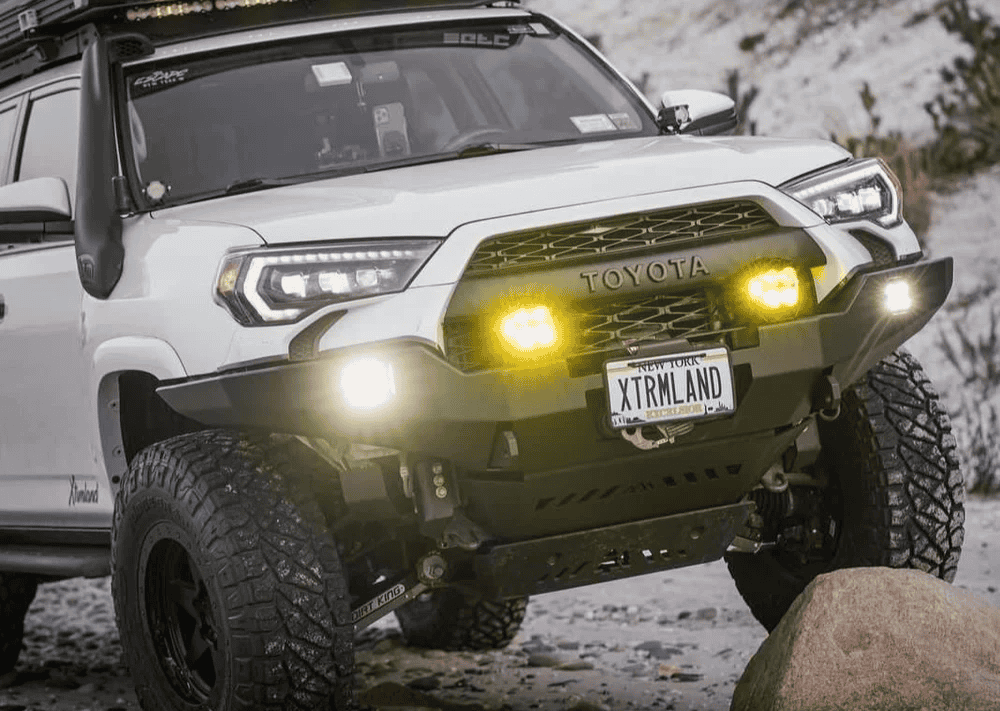Overland Vehicles

Overland travel revolves around stored energy. Batteries run fridges, cabin lights, fans, and induction cooktops. A shore power inlet adds a dependable way to refill that energy when sun is scarce or idling is not practical. Plug in at a campground or home and your system can recharge house batteries, power interior outlets, and reduce generator noise.
Campsite power is not always clean. Voltage can sag under heavy loads and outlets may be worn. A well planned inlet with quality components, proper protection, and smart charging smooths those variables. It also allows you to set clear priorities for what runs on AC and what charges DC so nothing competes at the wrong time.
A good plan starts with expected loads. If you only need to recharge batteries and run a laptop, a 15 amp inlet may be enough. If you want to power an air conditioner or induction cooking, a 30 amp inlet and heavier wire may be required. Select an inlet rating that your charger and distribution can actually use.
Choose an inverter charger or a dedicated AC charger based on your goals. Inverter chargers combine charging and AC inversion for outlet power when unplugged. Dedicated chargers are simpler and can be very efficient for battery recovery. Either way, match charger output to battery chemistry and bank size to avoid slow recovery or excess heat.
Keep transfer logic simple. A transfer switch selects between shore AC and inverter AC so outlets stay live with one source at a time. Automatic transfer is common and avoids manual errors. Place GFCI protection on outlet circuits and ensure your system handles neutral bonding correctly when on shore versus on inverter.
Inlets are commonly 15 amp or 30 amp at 120 volt for overland use. A 15 amp inlet accepts a standard plug with an outdoor rated cord. A 30 amp inlet uses a locking connector and a heavier cable suited for higher demand. Pick a weatherproof inlet with a gasketed cover, stainless hardware, and strain relief to protect the cable entry.
Protect people and equipment first. Use breakers sized to conductors, GFCI on receptacle circuits, and a transfer device that prevents backfeed. Bond grounds correctly to the chassis and follow best practices for cable routing and abrasion protection. In wet or dusty environments, select components with suitable ingress protection ratings and corrosion resistant finishes.
Run the inlet where it is accessible but protected from road spray. Many builders place it near the B pillar or rear corner to shorten cord runs and keep it off the most exposed body panels. Use marine grade or outdoor rated wire, supported at regular intervals with insulated clamps. Avoid tight bends and keep distance from heat sources.
Ventilate spaces with chargers and inverters. These devices create heat during heavy charging and need clear airflow. Provide service loops and label both ends of each conductor for future maintenance. Where the cord enters the cabin, add a drip loop and a sealed bulkhead to stop water intrusion.
When you plug in, decide what should be powered directly by AC and what should remain on DC. Prioritize charging the battery bank first if you expect to unplug soon. If you have a high draw appliance, consider running it on AC only while plugged in to keep battery recovery steady.
Smart chargers can adjust for low campsite voltage and temperature. They also apply staged charging for lithium, AGM, or flooded batteries. Pairing the right profile with your chemistry extends battery life and improves usable capacity across seasons.
A shore inlet that is thoughtfully matched to your loads, protected by the right devices, and integrated with a transfer switch will quietly do its job every night you plug in. Make choices that reduce complexity, control heat, and protect against moisture. The result is simple: faster charging, quieter camps, and fewer surprises.
If you want a system that feels invisible yet powerful, professional integration matters. OZK builds route clean cable runs, protect wire in high abrasion zones, and validate polarity and fault protection before delivery. We test charge performance on campsite grade power so you know what to expect in the real world.
Looking to pair your inlet with suspension, racks, or lighting upgrades on the same visit? Our team can package the full setup so you roll out with a balanced platform that is ready for long range travel. See our approach to complete trail builds here: Overland rigs.
For specialized systems, our technicians integrate inlet, charger, inverter, and transfer gear into a compact service bay that is easy to access and keep clean. Explore what a tailored package can include: Custom overland upfit. Curious about our process and standards in the shop? Learn more here: Why choose OZK Customs.
Tell us how you travel, what you power, and where you plug in. We will size the inlet, select the right charging architecture, and build a safe, compact system that keeps you moving. When you are ready to turn campsite outlets into dependable energy, our team is ready to help.
Ready to make campsite power effortless and safe? Our team designs and installs shore power systems that charge fast, switch cleanly, and protect your rig. Tell us about your goals and timeline, and we will map a clear plan from inlet to outlet. Submit the form to start your build with OZK Customs.
ADDRESS:
6159 E Huntsville Rd, Fayetteville, AR 72701
PHONE:
(479) 326-9200
EMAIL:
info@ozkvans.com